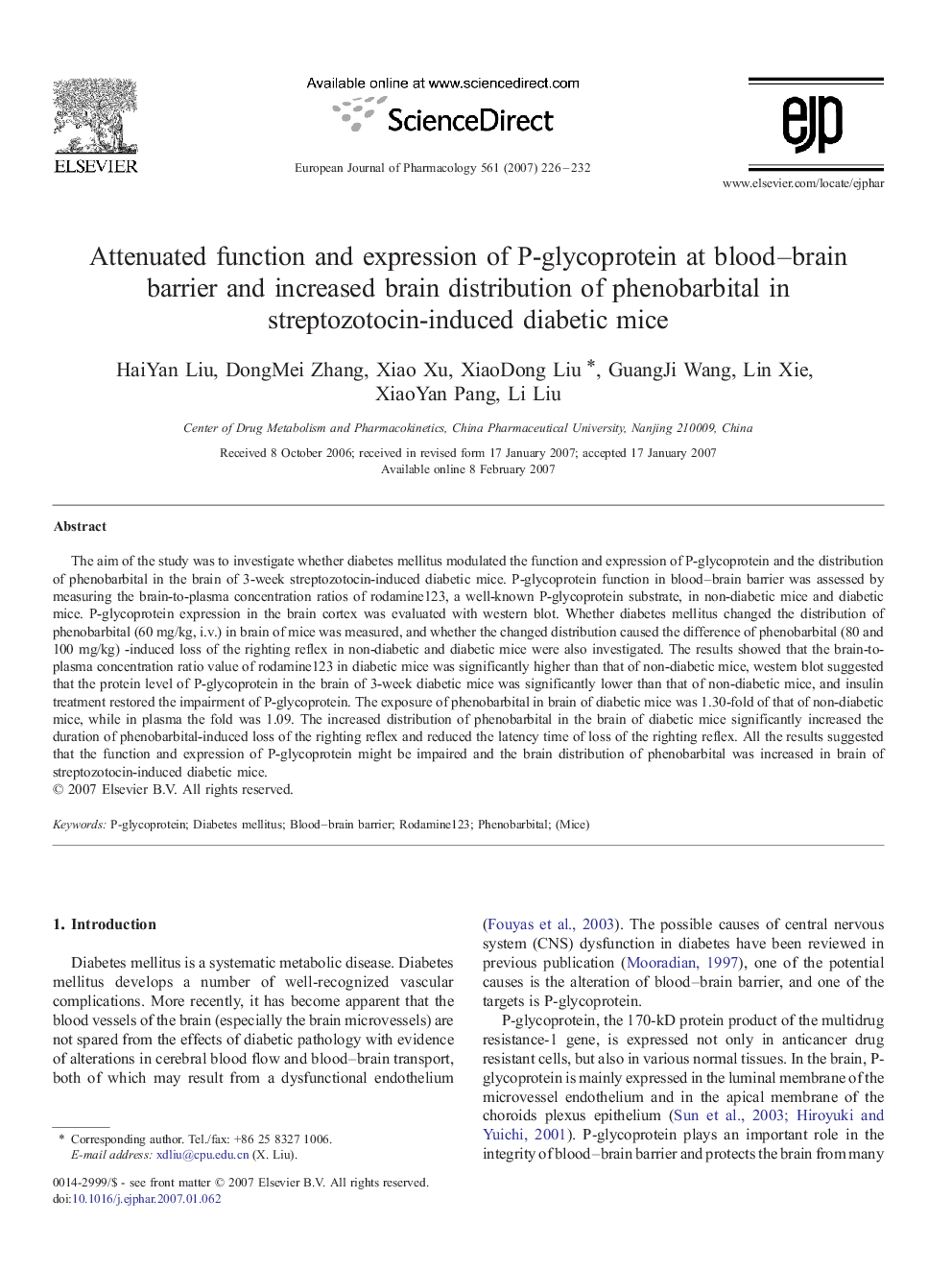| Article ID | Journal | Published Year | Pages | File Type |
|---|---|---|---|---|
| 2536294 | European Journal of Pharmacology | 2007 | 7 Pages |
The aim of the study was to investigate whether diabetes mellitus modulated the function and expression of P-glycoprotein and the distribution of phenobarbital in the brain of 3-week streptozotocin-induced diabetic mice. P-glycoprotein function in blood–brain barrier was assessed by measuring the brain-to-plasma concentration ratios of rodamine123, a well-known P-glycoprotein substrate, in non-diabetic mice and diabetic mice. P-glycoprotein expression in the brain cortex was evaluated with western blot. Whether diabetes mellitus changed the distribution of phenobarbital (60 mg/kg, i.v.) in brain of mice was measured, and whether the changed distribution caused the difference of phenobarbital (80 and 100 mg/kg) -induced loss of the righting reflex in non-diabetic and diabetic mice were also investigated. The results showed that the brain-to-plasma concentration ratio value of rodamine123 in diabetic mice was significantly higher than that of non-diabetic mice, western blot suggested that the protein level of P-glycoprotein in the brain of 3-week diabetic mice was significantly lower than that of non-diabetic mice, and insulin treatment restored the impairment of P-glycoprotein. The exposure of phenobarbital in brain of diabetic mice was 1.30-fold of that of non-diabetic mice, while in plasma the fold was 1.09. The increased distribution of phenobarbital in the brain of diabetic mice significantly increased the duration of phenobarbital-induced loss of the righting reflex and reduced the latency time of loss of the righting reflex. All the results suggested that the function and expression of P-glycoprotein might be impaired and the brain distribution of phenobarbital was increased in brain of streptozotocin-induced diabetic mice.
